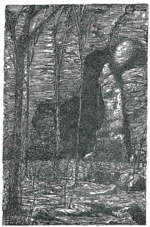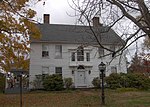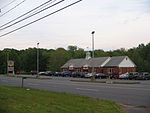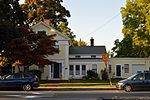Blackledge River
Connecticut geography stubsNortheastern United States river stubsRivers of ConnecticutRivers of Hartford County, ConnecticutTributaries of the Connecticut River

The Blackledge River is a tributary of the Salmon River which courses 16.4 miles (26.4 km) through eastern Connecticut in the United States. Rising from Sperry Pond in Bolton, the Blackledge amasses waters from feeder creeks along its course before joining the Jeremy River in Colchester, Connecticut. Salmon River, considered a major tributary of the Connecticut River, begins at the confluence of the Blackledge and Jeremy.A popular whitewater paddling route begins at West Road about 4 miles (6 km) south of Gay City State Park. There are frequent Class I-II whitewater rapids throughout the route to the Salmon River.
Excerpt from the Wikipedia article Blackledge River (License: CC BY-SA 3.0, Authors, Images).Blackledge River
Bolton Center Road,
Geographical coordinates (GPS) Address Nearby Places Show on map
Geographical coordinates (GPS)
| Latitude | Longitude |
|---|---|
| N 41.773 ° | E -72.453 ° |
Address
Bolton Center Road 101
06043
United States
Open on Google Maps









